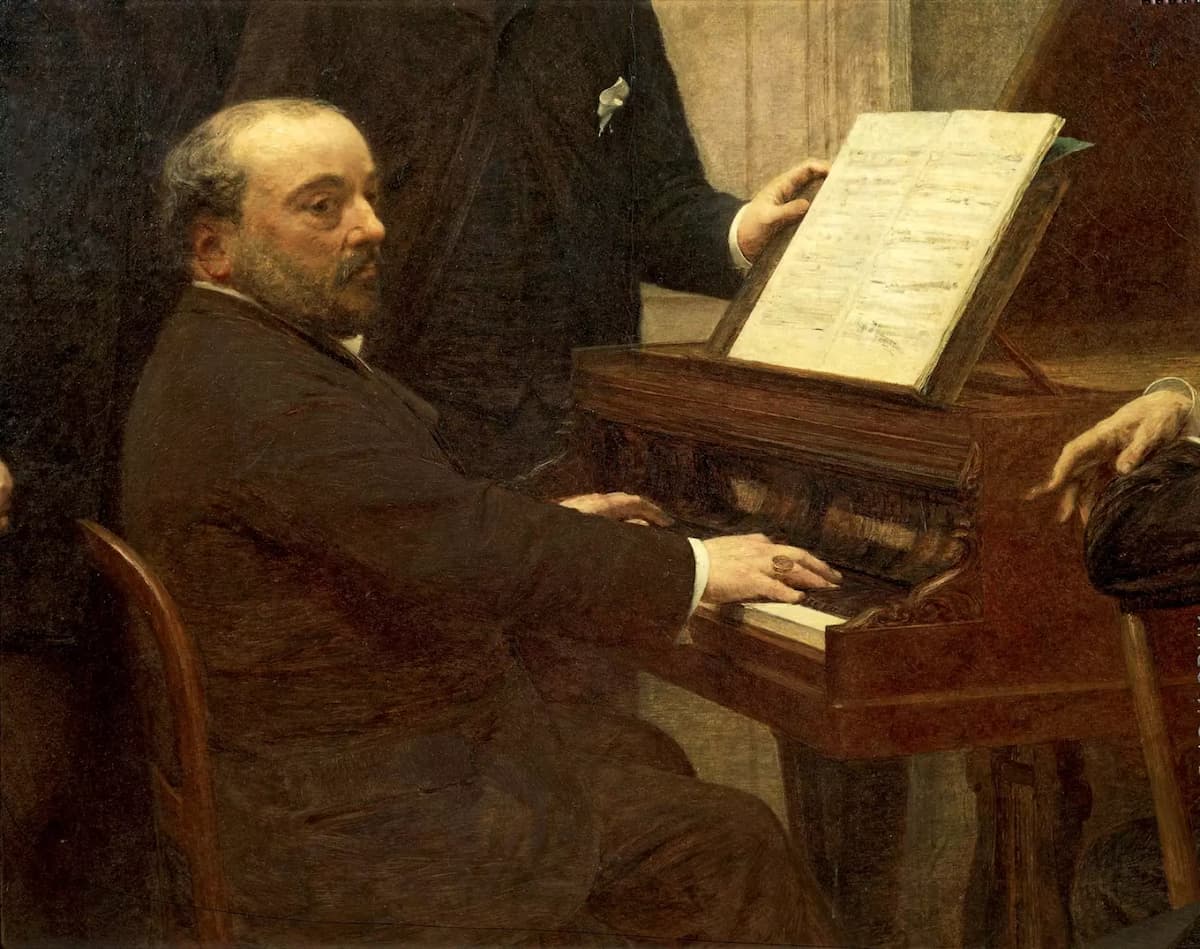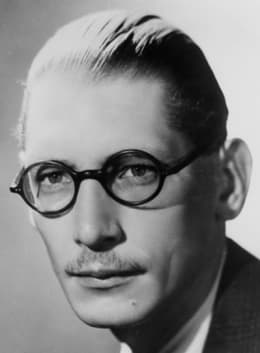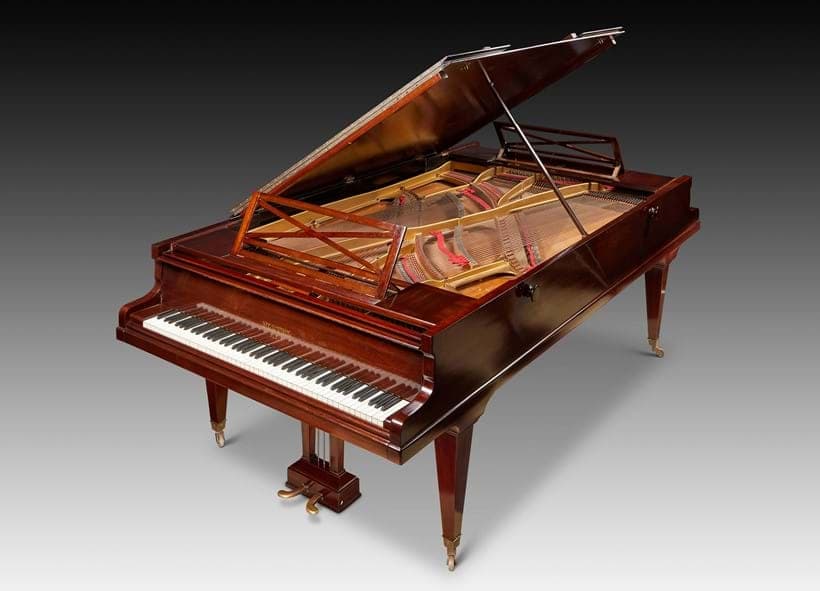The composer Francis Poulenc loved the music of Emmanuel Chabrier (1841-1894), as did Debussy, saying once after a performance of Chabrier’s Ode à la musique ‘…I love this music so much that I want to hear it again.’

Henri Fantin-Latour: Emmanuel Chabrier, detail of Around the Piano, 1885 (Musée d’Orsay)
Chabrier was born in the Auvergne region of France and, although his musical talents were recognised early on, his father wanted him to follow him as a lawyer. His career as a civil servant in Paris lasted from 1861 until 1880 when he quit to follow his musical ideals. His lack of music education put him outside the usual composer’s path through the Paris Conservatoire to Italy with the Prix de Rome, but his own talents made this detail nearly irrelevant.
The whole piece is driven by sounds and syncopated melody. Chabrier called it both a ‘quite amusing piano piece’ and happily reported to have ‘counted one hundred and thirteen different sounds’ in its pages.
The title, Bourrée fantasque, referred to the French dance called the bourrée that originated in Auvergne.

Bourrée dancers in Auvergne in the early 20th century
A bourrée is in double time with a characteristic pick-up to the first measure. Fantasque means ‘fantasy’ so in this fantasy dance, Chabrier pushes everything: the speed is undanceable, the rhythms are fresh, and Chabrier’s imagination is wide-ranging.
When Chabrier gave the work to its dedicatee, Eduard Risler (1873-1929), he told him as a warning: ‘I am sending you a piece in which every note presents a difficulty…’. Alfred Cortot, the influential French pianist wrote about the work: ‘no one had written like this for the piano, investing it with the most unexpected orchestra effects by the use of timbres in conjunction with rhythm and exploiting the impressionist resources of the pedal.’
In a way, Chabrier presented a new way of writing for the piano – this isn’t the speed of Chopin for the sake of speed, but this is the percussive side of the piano combined with its melodic side to create a new sound. The work was Chabrier’s last piece for the piano and because of his illness in his last years, he was unable to create the orchestral version, he left that to the German conductor Felix Mottl; another version was orchestrated by French composer Charles Koechlin.

Soulima Stravinsky, ca. 1950 (Studio Carlet Aine)
(University of Illoins Music Librry)
Emmanuel Chabrier: Bourrée fantasque
In this 1950 performance, Swiss-American composer and pianist Soulima Stravinsky (1910-1994) is heard. He was best known for his performances of music by his father, Igor Stravinsky, and for famously playing duets with him on a special double piano built by Pleyel.

Pleyel double piano owned by Madeleine Lioux Malraux, 1946
Soulima Stravinsky made his American debut in 1948 and in 1950, joined the piano faculty at the University of Illinois where he remained until 1978 before resuming his solo career and starting his career as a composer.

Performed by
Soulima Stravinsky
Recorded in 1950
Official Website
For more of the best in classical music, sign up for our E-Newsletter
